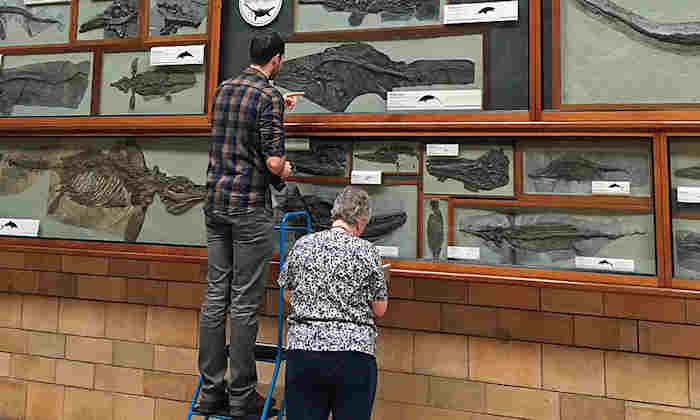Ancient reptile mystery solved as two extinct species found to be the same
08 Mar 2017
Scientists delve through centuries-old records to identify species

Dean Lomax, palaeontologist, Honorary Scientist at the University and a presenter on ITV’s Dinosaur Britain, worked with Professor Judy Massare of Brockport College, New York, to study 1000s of ichthyosaur fossils and have delved through hundreds of years of records to solve an ancient mystery.
Many ichthyosaur fossils were found in England during the early 19th century, but it was not until 1821 that the first ichthyosaur species was described - called Ichthyosaurus communis. This species has become one of the most well-known and iconic of all the British fossil reptiles.
In the mid-1970s, palaeontologist Dr Chris McGowan was the first to suggest that Ichthyosaurus communis and I. intermedius may represent the same species. He could not find reliable evidence to separate the two species. Subsequent studies argued for and against the separation of the species.
In this new study, the duo has reviewed all of the research for and against the separation of the two species. This is the most extensive scientific study ever published comparing the two. The duo confirm the species are the same and that features of Ichthyosaurus intermedius can be found in other ichthyosaur species, including I. communis.
In recent years, the duo has described three new species and a reassessment of historical species. Their work has provided a far superior understanding than has ever been produced.
Dean said: “The early accounts of ichthyosaurs were based on very scrappy, often isolated, remains. This resulted in a very poor understanding of the differences between species and thus how to identify them. To complicate matters further, the original specimen of Ichthyosaurus communis is lost and was never illustrated.
“Similarly, the original specimen of I. intermedius is also lost, but an illustration does exist. This has caused a big headache for palaeontologists trying to understand the differences between the species”.
